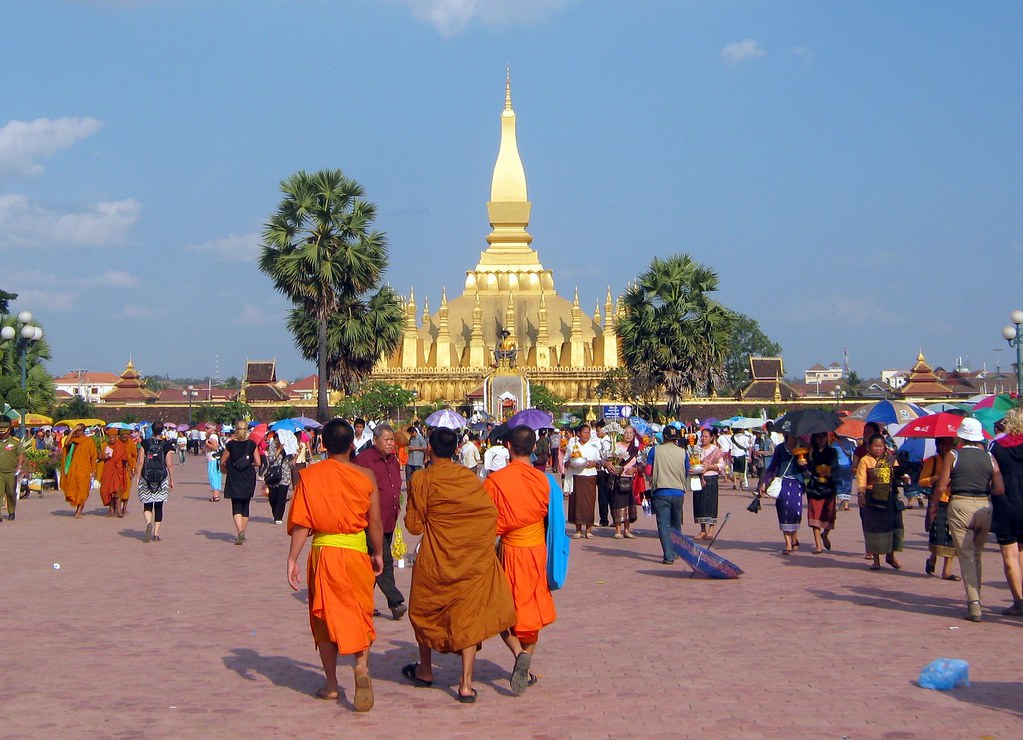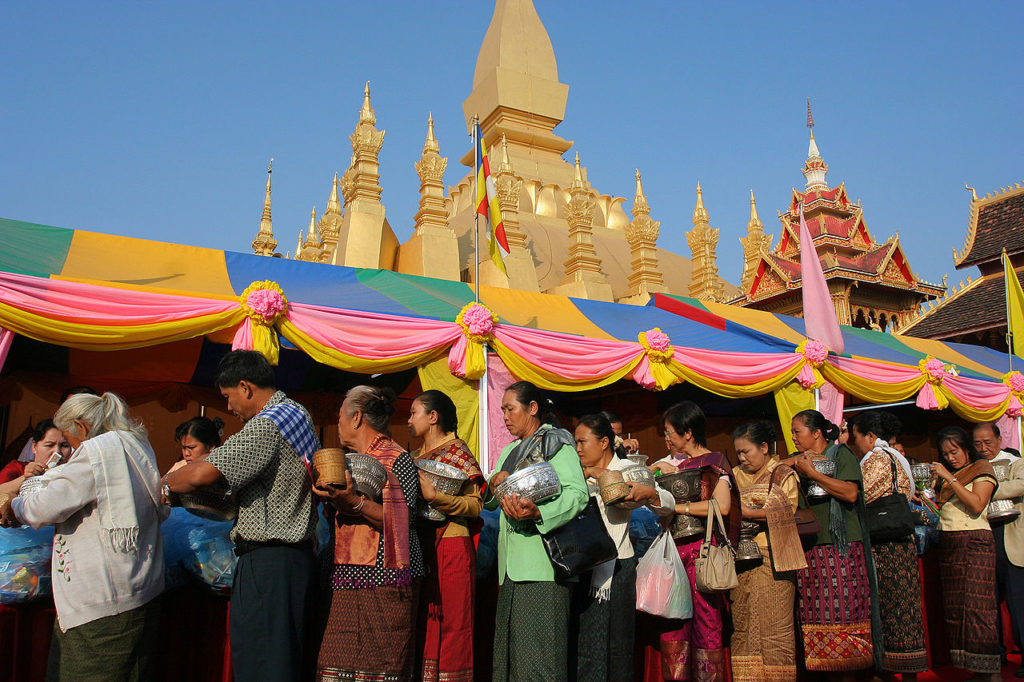The festival, which is taking place from November 4-8, pays homage to the Pha That Luang stupa, which is revered as a sacred site as it is believed to house a relic of the Buddha, and has been rebuilt several times over the centuries.
In the mid-16th century, King Setthathirat relocated his capital from Luang Prabang to Vientiane and ordered the construction of Pha That Luang in 1566. It is the most important religious structure in Laos and the national symbol, which features on the country’s emblem.
The celebration places a strong emphasis on cultural traditions and Lao lifestyle, with one of the attractions this year being replicas of houses inhabited by Lao people in years gone by, along with depictions of the way of life at that time.
The That Luang square is the site of numerous stalls displaying items produced around Laos under the One District, One Product scheme.
 There are also stalls featuring cultural and tourism products, and exhibits depicting innovations, the high-speed railway, logistics zones, and the expressway.
There are also stalls featuring cultural and tourism products, and exhibits depicting innovations, the high-speed railway, logistics zones, and the expressway.
Plenty of entertainment is also on offer with stages set up for cultural shows.
Festival organisers said this year’s event seeks to preserve and promote Lao culture and traditions in a world where outside cultural influences are gaining in popular appeal.
A large variety of products, including food and other items made in Laos, are on sale and attract bargain hunters, while a special “green garden” exhibit highlights ways to promote a green economy. This year, the organising committee has arranged wide walking paths at the trade fair and a mixed bag of stalls displaying arts-related and other commodities.
 There will also be a That Luang stupa consecration ceremony, followed by various religious and traditional events from November 6 to November 8.
There will also be a That Luang stupa consecration ceremony, followed by various religious and traditional events from November 6 to November 8.
The religious festival is held annually with the celebrations lasting for at least three days and culminating on the full moon day of the 11th lunar month.
On Monday, thousands of Buddhists carried colourful pasaatpheung (wax castles) adorned with candles, flowers, money and incense as they joined the annual procession to pay homage to the grand stupa. People from Vientiane’s nine districts take part in the wax castle procession, which starts at Vat Simeuang and moves to the That Luang stupa.
This is one of the highlights of the festival and has remained unchanged over the centuries. It is a time of celebration and sees participants singing, playing traditional instruments, and performing traditional dances. On the last day of the festival, people will rise at dawn for a mass almsgiving ceremony, gather to watch the traditional tikhy match, and take part in the final candlelight procession around the stupa in the evening.
According to vientianetimes.org.la












